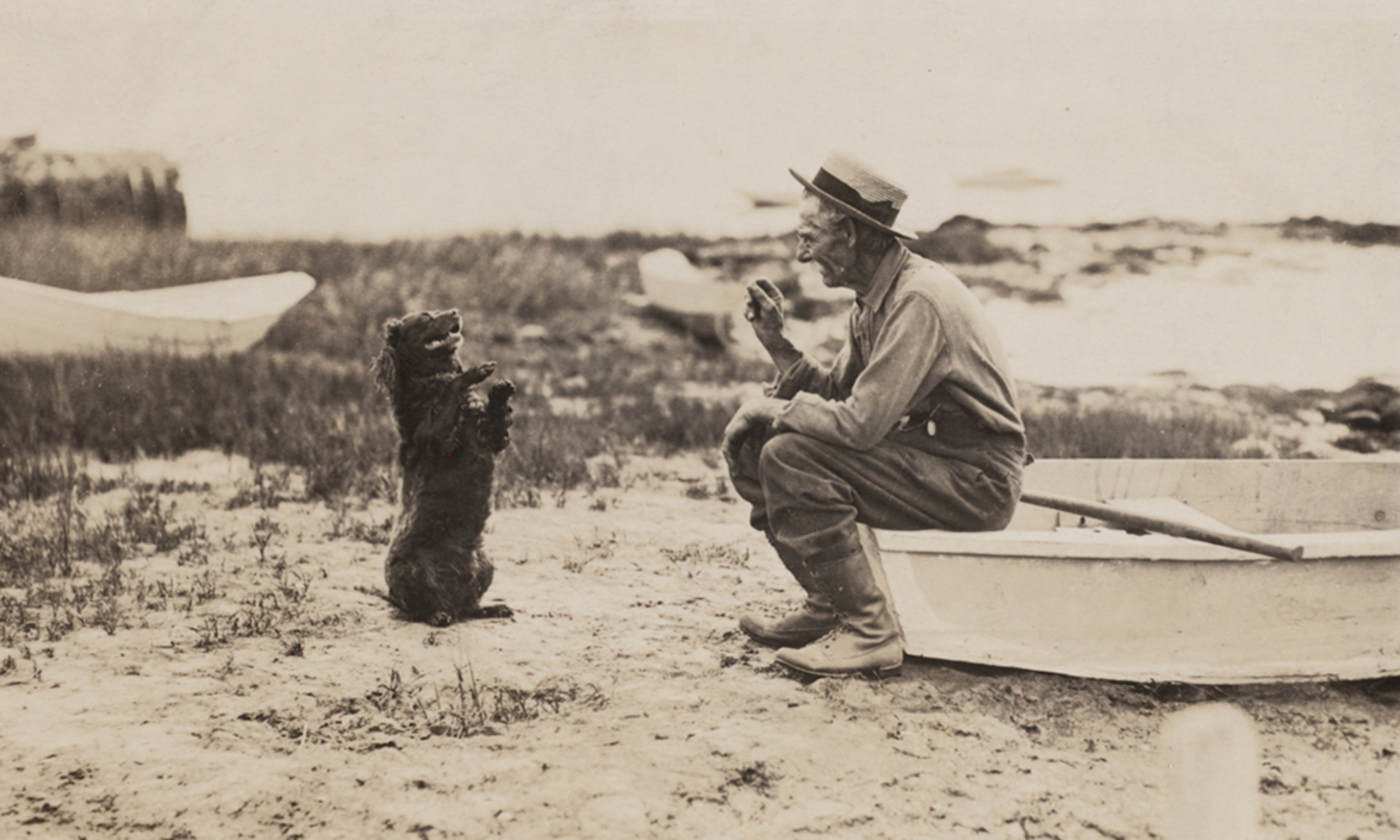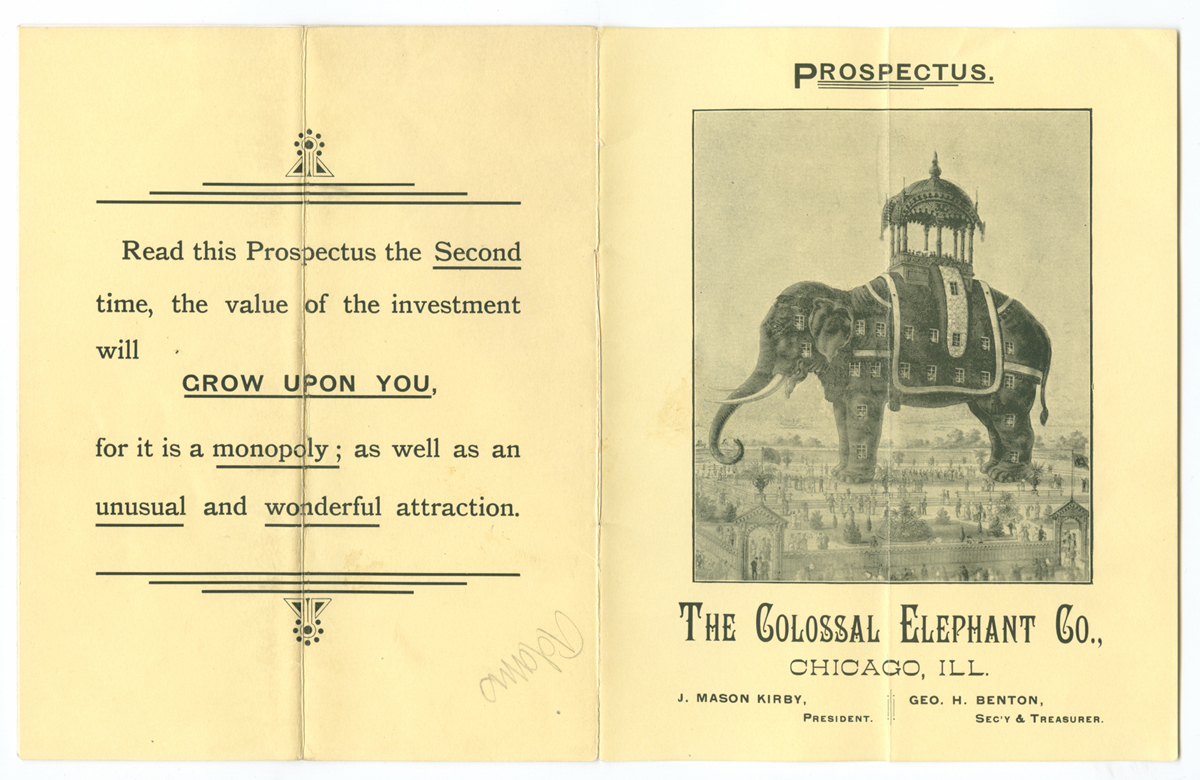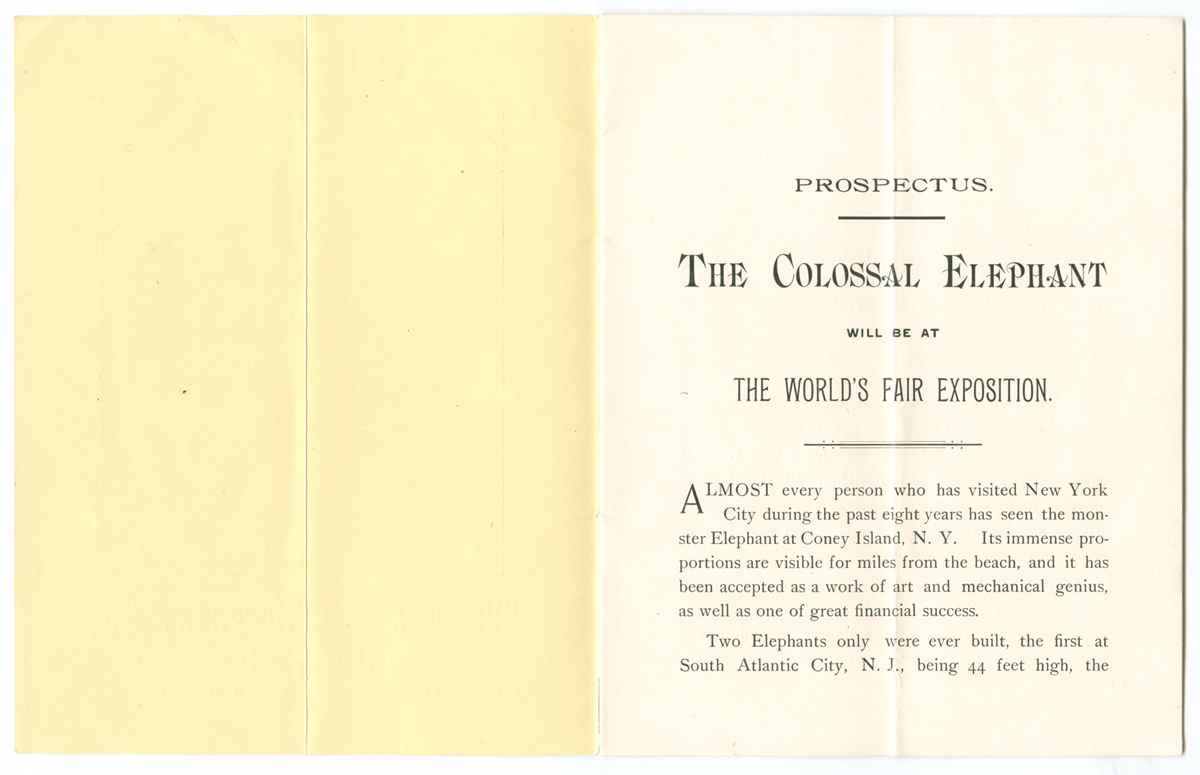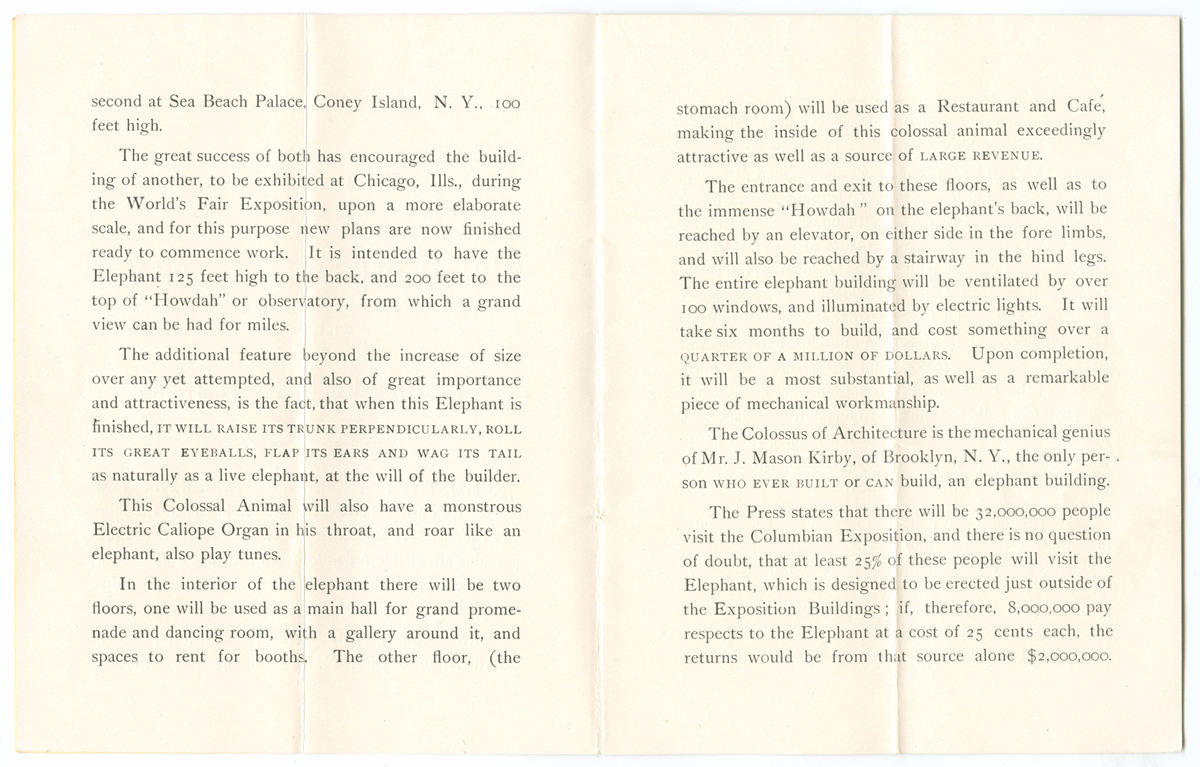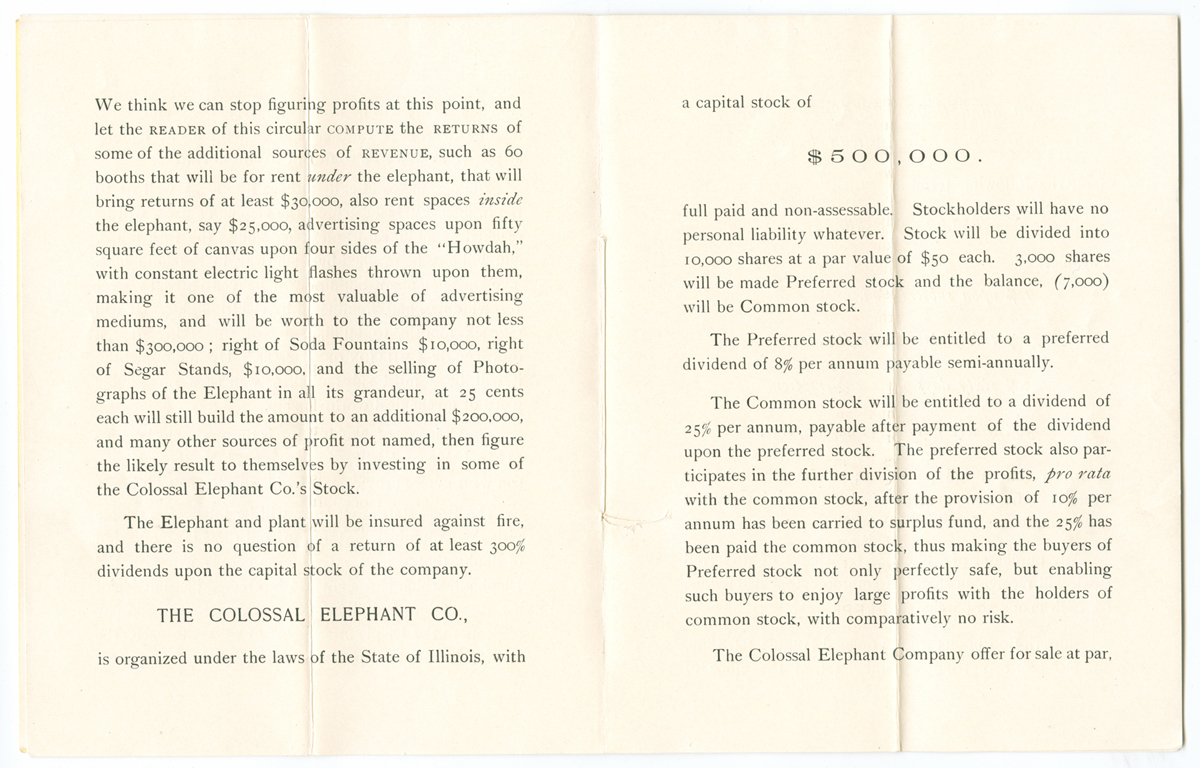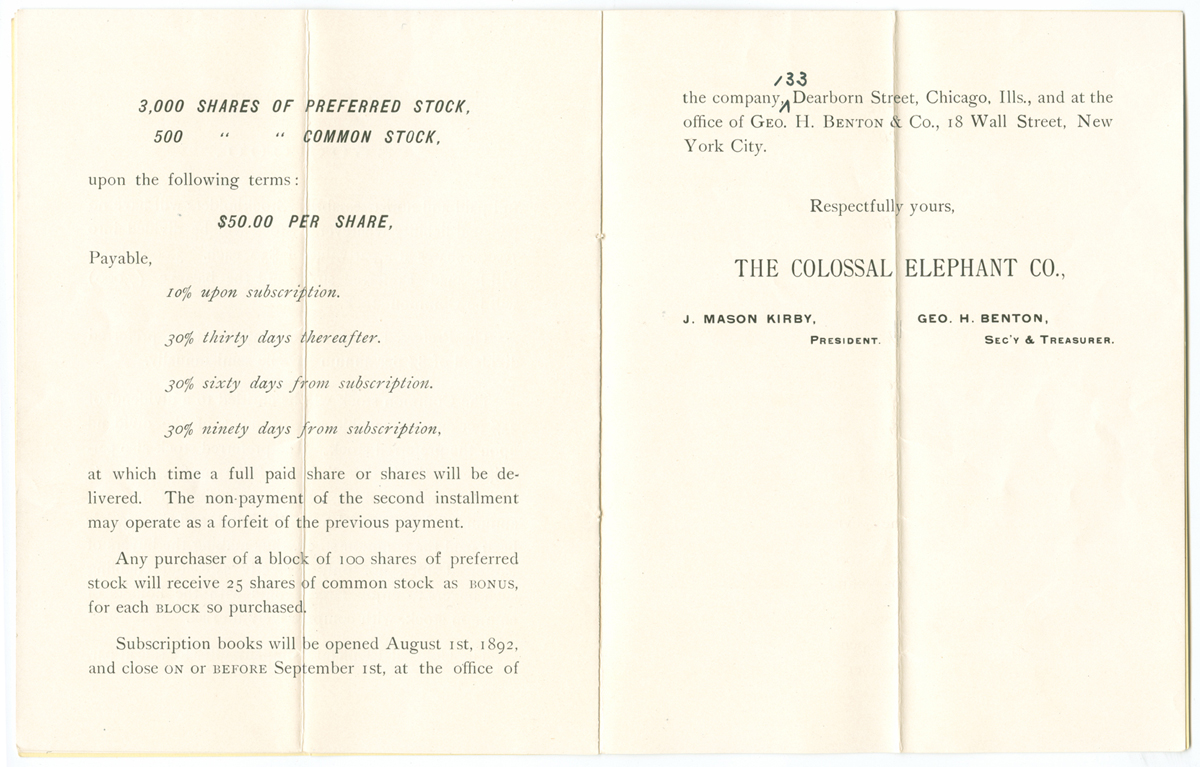Last week’s look at the capitalist Horatio Adams leads to this week’s pique. Among the many stockbroker’s receipts, enticements to buy land in Nebraska, an 8% Gold Bond for the Death Valley – Arcalvado Consolidated Mine Company, and stock in the Association Salt Company is a beautiful little booklet.
Yes, in January 1893, a friend of Horatio’s sent him a golden opportunity, a chance to invest in a Colossal Elephant to be built at the Chicago World’s Fair. The patent holder J.V. Lafferty had already built two others: Lucy the Margate Elephant near Atlantic City, NJ, and the Elephantine Colossus in Coney Island. He and his partners hoped to raise enough money to build an even grander “work of art and mechanical genius.”
While Lucy stood a mere 44 feet tall and the Colossus stretched to 100, the proposed Chicago model would take on “a more elaborate scale…200 feet to the top of ‘Howdah’ or observatory, from which a grand view can be had for miles.”
Better yet, “beyond the increase in size over any yet attempted, and also of great importance and attractiveness, is the fact that when this Elephant is finished, IT WILL RAISE ITS TRUNK PERPENDICULARLY, ROLL ITS GREAT EYEBALLS, FLAP ITS EARS AND WAG ITS TAIL as naturally as a live elephant.” A “monstrous Electric Calliope Organ in his throat” would add sound.
After some discussion of the profit potential in soda fountains and “segar” stands, the prospectus notes that “the Elephant and plant will be insured against fire,” a good plan as the Coney Island Colossus would be destroyed by fire just a few years later.
As tempting an opportunity as the eye-rolling, ear-flapping Colossal Elephant represented, Horatio was not swayed. And it seems he was not alone in turning down the investment: searching through books and photographs and postcards related to the Fair yields not a single clue that the Colossal Elephant was ever built.
